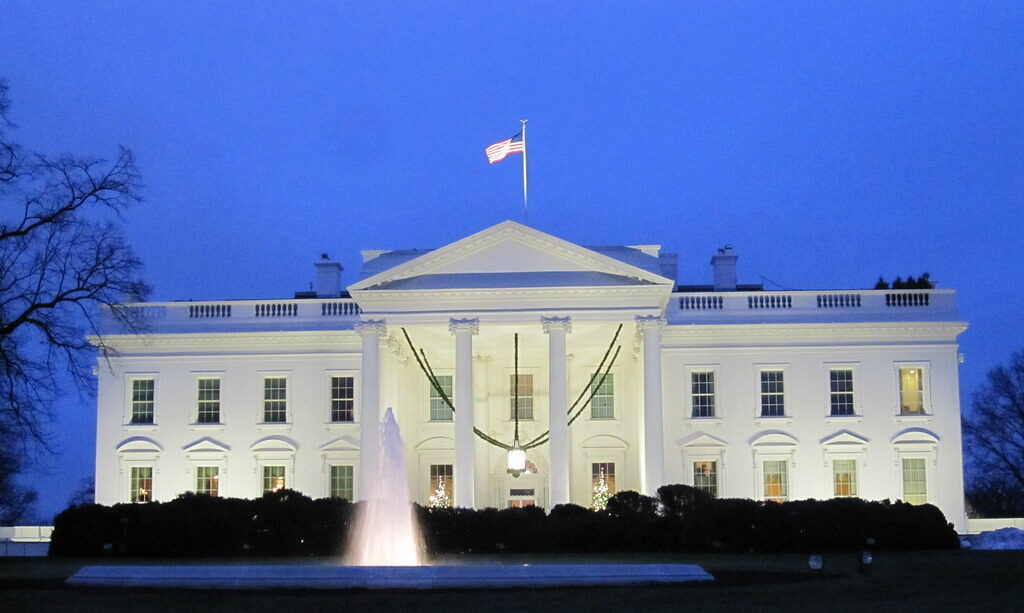Key Takeaways
- Most Americans believe the country is headed the wrong way.
- Polls hint at a GOP wipeout in the 2026 midterms.
- A Democratic return to the White House in 2029 looks possible.
- GOP divisions and mixed signals from Trump fuel the trouble.
- Trump’s praise of a Democratic mayor-elect weakened a key Republican campaign.
Opinion columns warn that unless President Trump shifts course, Democrats might reclaim the presidency in 2029. Political commentator Matthew Hennessey from a major financial newspaper suggests that current trends favor a Democratic return. He points to grim polling, party infighting, and missteps by the Trump team.
Why a Democratic Return May Be Likely
According to the polling average at Real Clear Politics, nearly six in ten Americans think the nation is off track. Such deep dissatisfaction usually hurts the party in power. Therefore, experts say Republicans could face a major loss in the 2026 midterms. As a result, Democrats may build momentum toward 2028 and claim victory. In fact, Hennessey writes that a full GOP wipeout in the next midterms could pave the way for a Democratic return in 2029.
The Midterm Warning
First, midterm elections reflect voter anger at the ruling party. Historically, presidents lose seats in Congress during their midterms. Right now, the public’s mood is sour. Many voters cite high inflation, border concerns, and lasting pandemic effects. Moreover, disagreements over healthcare and economic policy tear the GOP apart. As these conflicts linger, Republican candidates may struggle to present a united front.
Internal GOP Divisions
Meanwhile, party leaders debate possible successors to Trump. They discuss names like Marco Rubio and J.D. Vance before even winning the next race. Yet Hennessey warns that assuming victory hurts strategy. Voters already hold strong views about both men. Thus, measuring “big red MAGA hats” for them offers no real edge. Neither candidate stands as a sure winner against a Democratic challenger with an energized base.
Trump’s Mixed Signals
Further complicating matters, President Trump’s public acts sometimes clash with GOP goals. For example, he hosted the New York City mayor-elect Zohran Mamdani—an outspoken Democrat—in the Oval Office. He praised Mamdani’s voters, his looks, and even noted they share many city residents. As a result, Trump undercut Rep. Elise Stefanik’s message tying her gubernatorial rival to socialist ideals. Consequently, the GOP campaign in New York lost its main attack point within minutes.
The Stefanik–Mamdani Effect
In a deep-blue state like New York, Republicans need a focused plan. Stefanik built her campaign on the idea that Gov. Kathy Hochul is the worst chief executive in the nation. She also painted Mamdani as a dangerous socialist. Yet Trump’s praise for the young mayor-elect collapsed that argument. Suddenly, voters saw no reason to fear Mamdani or blame Hochul by association. This episode shows how one misstep can shake a key race and deepen party discord.
What Happens Next?
Looking ahead, the GOP faces a critical path. First, leaders must decide whether to stick with Trump or back a new face. However, they must also heal wounds within the party. They need clear policies on healthcare, the economy, and immigration. Otherwise, voters may turn away in 2026 and 2028. Meanwhile, Democrats will seek to keep their base fired up. They will highlight Republican chaos and promise stability. If these trends continue, the path to a Democratic return grows clearer.
Moreover, Democrats will rally around issues that unite them, such as climate action and affordable healthcare. They will frame the GOP as out of touch with everyday concerns. As a result, they could energize young voters and independents. In addition, they will likely field charismatic candidates who appeal to a broad audience. Thus, a strong Democratic campaign might dominate the headlines and fundraising.
Preparing for 2026 and Beyond
Republicans need a realistic midterm strategy. They must focus on local races, recruit strong candidates, and avoid high-profile gaffes. In particular, they cannot treat the 2026 midterms as a mere formality. Otherwise, they risk losing control of Congress entirely. Losing the Senate and House would cripple Trump’s agenda and empower Democrats. It would also set the stage for a competitive 2028 race.
On the flip side, Democrats must guard against overconfidence. While they have an edge in current polling, they can’t take victory for granted. They need to address internal divisions over spending, foreign policy, and social issues. Should they falter, the Republican base could rally behind a renewed MAGA movement. Therefore, both parties face high stakes in the next few years.
Conclusion
In short, a Democratic return to the White House in 2029 is no longer a distant idea. Polls show deep voter unhappiness, and the GOP wrestles with internal fights and mixed messages. Trump’s unexpected praise for a Democratic mayor-elect only highlights the party’s disarray. Consequently, experts warn Republicans to rethink their strategy or risk handing power back to the Democrats. If current trends persist, Americans could wake up in 2029 with President Biden or another Democrat in the Oval Office once again.
Frequently Asked Questions
What is a Democratic return?
A Democratic return means a Democrat winning the presidency and taking office, replacing the current Republican leadership.
Why do experts warn of a GOP wipeout?
Polls show many Americans think the country is headed the wrong way. That usually hurts the party in power during midterms.
How did Trump’s meeting with Mamdani affect Stefanik’s campaign?
By praising Mamdani, Trump undercut Stefanik’s attack that framed the mayor-elect as a dangerous socialist, weakening her message.
Can Republicans reverse these trends?
Yes, but they must unite, form clear policies, avoid high-profile missteps, and treat upcoming elections as crucial contests.

